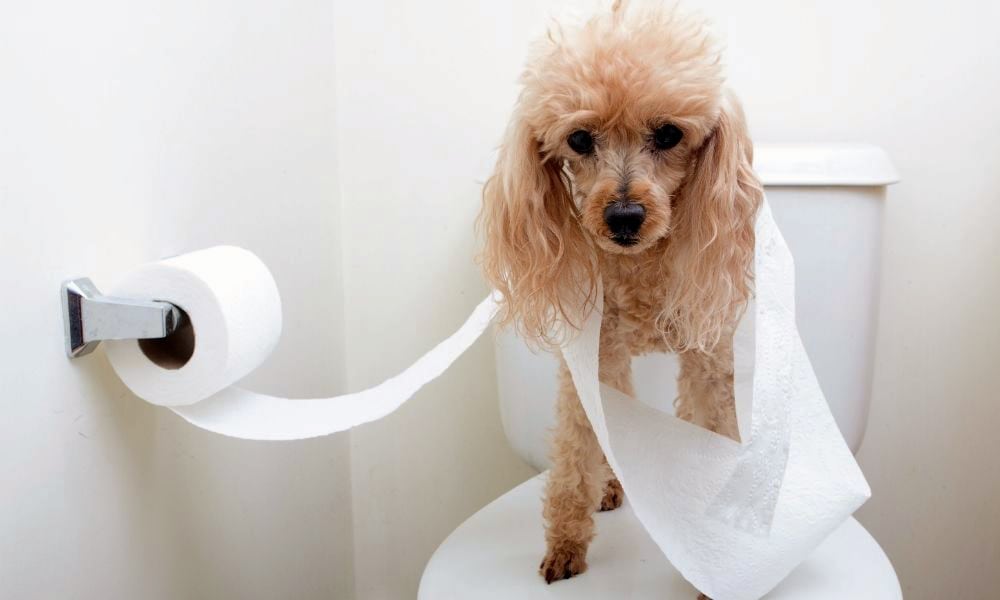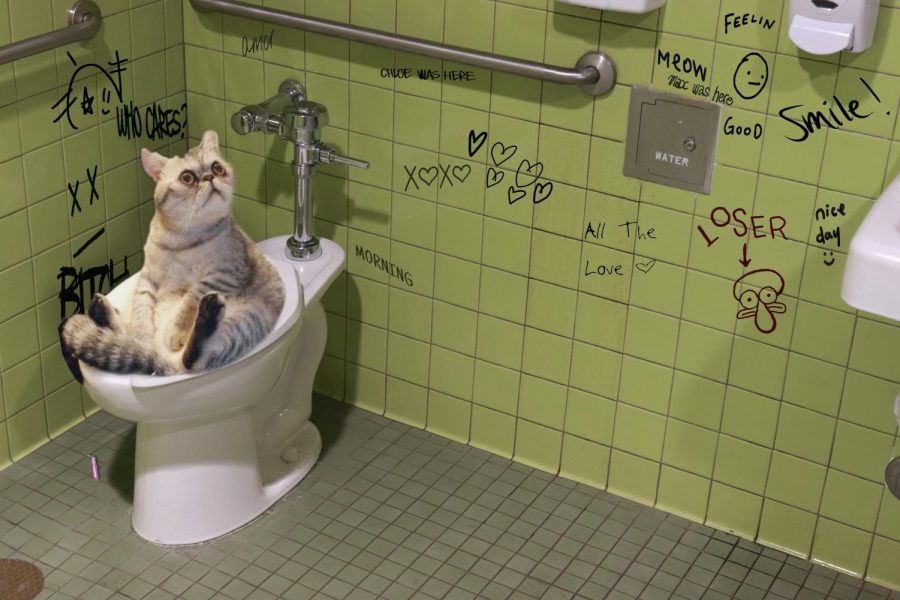Best Motives to Stay away from Flushing Animal Waste Down the Toilet
Best Motives to Stay away from Flushing Animal Waste Down the Toilet
Blog Article
Everybody has got their own perception about Why you should never flush dog poop down the toilet.

When it pertains to taking care of waste, especially animal waste, lots of people frequently turn to the hassle-free choice of flushing it down the toilet. However, this relatively very easy option can have major effects for the atmosphere and public health. In this article, we'll check out why flushing animal waste down the commode is a poor concept and provide different methods for correct disposal.
Intro
Proper garbage disposal is critical for keeping ecological sustainability and public health. While it may seem harmless to flush animal waste down the toilet, it can cause numerous concerns, both for the setting and human wellness.
Risks of flushing pet waste
Ecological influence
Flushing animal waste presents damaging bacteria and microorganisms right into waterways, which can negatively impact water environments. These virus can pollute water resources and damage aquatic life, disrupting fragile communities.
Public health problems
Pet waste includes hazardous microorganisms such as E. coli and Salmonella, which can position serious wellness dangers to people. Flushing pet waste down the bathroom can pollute water supplies, leading to the spread of conditions and infections.
Alternatives to flushing
Instead of flushing pet waste down the toilet, there are a number of different disposal methods that are much more eco-friendly and hygienic.
Composting
Composting pet waste is an environmentally friendly means to get rid of it. By composting, organic matter is broken down right into nutrient-rich soil, which can be utilized to feed yards and plants.
Land fill disposal
Getting rid of animal waste in a land fill is another alternative. While not as eco-friendly as composting, it is a more secure option to flushing, as it protects against the contamination of water resources.
Family pet waste disposal systems
There are specific animal garbage disposal systems readily available that securely and hygienically dispose of animal waste. These systems usually make use of enzymes to break down waste and remove odors.
Actions to correct animal garbage disposal
To make sure appropriate disposal of pet waste, follow these steps:
Scooping and bagging waste
On a regular basis scoop and bag animal waste using eco-friendly bags. This protects against waste from contaminating the environment.
Making use of designated waste containers
Dispose of bagged animal waste in designated waste containers, such as compost bins or garbage dump containers. Avoid flushing it down the bathroom in all expenses.
Cleaning up litter boxes and pet dog locations consistently
On a regular basis tidy litter boxes and family pet locations to avoid the build-up of waste and bacteria. Usage pet-safe cleansing products to preserve health.
Advantages of appropriate disposal approaches
Embracing correct disposal methods for animal waste uses numerous benefits:
Lowered environmental pollution
Appropriate disposal approaches lower the threat of environmental pollution, shielding rivers and ecological communities from contamination
Lessened threat of water contamination.
By avoiding flushing animal waste down the bathroom, the threat of water contamination is dramatically decreased, protecting public health.
Enhanced hygiene and hygiene
Correct disposal approaches promote better hygiene and hygiene, producing a more secure setting for both human beings and pets.
Final thought
To conclude, purging pet waste down the toilet is damaging to the setting and public health. By taking on alternative disposal approaches and following proper waste administration methods, we can reduce the negative effect of pet waste and contribute to a cleaner, healthier planet.
Why You Should Never Flush Cat Poop Down the Toilet
A rose by any other name might smell as sweet, but not all poop is created equal. Toilets, and our sewage systems, are designed for human excrement, not animal waste. It might seem like it couldn’t hurt to toss cat feces into the loo, but it’s not a good idea to flush cat poop in the toilet.
First and foremost, assuming your cat uses a litter box, any waste is going to have litter on it. And even the smallest amount of litter can wreak havoc on plumbing.
Over time, small amounts build up, filling up your septic system. Most litter sold today is clumping; it is made from a type of clay that hardens when it gets wet. Ever tried to scrape old clumps from the bottom of a litter box? You know just how cement-hard it can get!
Now imagine just a small clump of that stuck in your pipes. A simple de-clogger like Drano isn’t going to cut it. And that means it’s going to cost you big time to fix it.
For an amusing, graphic tale of what happens when you flush too much litter down the toilet all at once, take a few minutes to read Gene Weingarten’s 2017 Washington Post column “So that’s what happens when you flush cat litter down the toilet.”
Parasitic Contamination
Believe it or not, your healthy kitty may be harboring a nasty parasite. Only cats excrete Toxoplasma in their feces. Yet it rarely causes serious health issues in the cats that are infected. Most people will be fine too if infected. Only pregnant women and people with compromised immune systems are at risk. (If you’ve ever heard how women who are expecting are excused from litter cleaning duty, Toxoplasma is why.)
But other animals may have a problem if infected with the parasite. And human water treatment systems aren’t designed to handle it. As a result, the systems don’t remove the parasite before discharging wastewater into local waterways. Fish, shellfish, and other marine life — otters in particular — are susceptible to toxoplasma. If exposed, most will end up with brain damage and many will die.
Depending on the species of fish, they may end up on someone’s fish hook and, ultimately on someone’s dinner plate. If that someone has a chronic illness, they’re at risk.
Skip the Toilet Training
We know there are folks out there who like to toilet train their cats. And we give them props, it takes a lot of work. But thanks to the toxoplasma, it’s not a good idea.
Leave the toilet to the humans, and accept your future litter cleaning duty.

On a regular basis tidy litter boxes and family pet locations to avoid the build-up of waste and bacteria. Usage pet-safe cleansing products to preserve health.
Advantages of appropriate disposal approaches
Embracing correct disposal methods for animal waste uses numerous benefits:
Lowered environmental pollution
Appropriate disposal approaches lower the threat of environmental pollution, shielding rivers and ecological communities from contamination
Lessened threat of water contamination.
By avoiding flushing animal waste down the bathroom, the threat of water contamination is dramatically decreased, protecting public health.
Enhanced hygiene and hygiene
Correct disposal approaches promote better hygiene and hygiene, producing a more secure setting for both human beings and pets.
Final thought
To conclude, purging pet waste down the toilet is damaging to the setting and public health. By taking on alternative disposal approaches and following proper waste administration methods, we can reduce the negative effect of pet waste and contribute to a cleaner, healthier planet.
Why You Should Never Flush Cat Poop Down the Toilet
A rose by any other name might smell as sweet, but not all poop is created equal. Toilets, and our sewage systems, are designed for human excrement, not animal waste. It might seem like it couldn’t hurt to toss cat feces into the loo, but it’s not a good idea to flush cat poop in the toilet.
First and foremost, assuming your cat uses a litter box, any waste is going to have litter on it. And even the smallest amount of litter can wreak havoc on plumbing.
Over time, small amounts build up, filling up your septic system. Most litter sold today is clumping; it is made from a type of clay that hardens when it gets wet. Ever tried to scrape old clumps from the bottom of a litter box? You know just how cement-hard it can get!
Now imagine just a small clump of that stuck in your pipes. A simple de-clogger like Drano isn’t going to cut it. And that means it’s going to cost you big time to fix it.
For an amusing, graphic tale of what happens when you flush too much litter down the toilet all at once, take a few minutes to read Gene Weingarten’s 2017 Washington Post column “So that’s what happens when you flush cat litter down the toilet.”
Parasitic Contamination
Believe it or not, your healthy kitty may be harboring a nasty parasite. Only cats excrete Toxoplasma in their feces. Yet it rarely causes serious health issues in the cats that are infected. Most people will be fine too if infected. Only pregnant women and people with compromised immune systems are at risk. (If you’ve ever heard how women who are expecting are excused from litter cleaning duty, Toxoplasma is why.)
But other animals may have a problem if infected with the parasite. And human water treatment systems aren’t designed to handle it. As a result, the systems don’t remove the parasite before discharging wastewater into local waterways. Fish, shellfish, and other marine life — otters in particular — are susceptible to toxoplasma. If exposed, most will end up with brain damage and many will die.
Depending on the species of fish, they may end up on someone’s fish hook and, ultimately on someone’s dinner plate. If that someone has a chronic illness, they’re at risk.
Skip the Toilet Training
We know there are folks out there who like to toilet train their cats. And we give them props, it takes a lot of work. But thanks to the toxoplasma, it’s not a good idea.
Leave the toilet to the humans, and accept your future litter cleaning duty.

We are very interested by Don't Flush Your Pets Poo Down The Loo, Vet Warns and I'm hoping you appreciated my post. Do you know another individual who is excited by the niche? Be sure promote it. Thank you for going through it.
Website Report this page